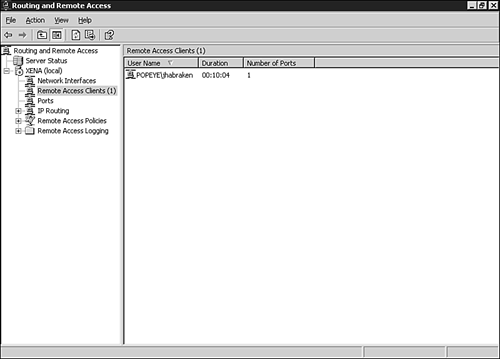Managing Remote Connections
| Once the user is attached to the remote access server and the network, the remote access software that you are using on your server will provide you with the ability to monitor that remote connection and any other remote connections on the server. This means that you can monitor the activity of the remote client in terms of the number of bytes that are sent and received and the time that the client has been logged on to the network. On a Windows Server 2003 remote access server, dial-in connections are monitored and managed using the Routing and Remote Access tool, as shown in Figure 17.6. Not only can the connection be monitored , but the connection can be terminated by the network administrator. This allows you to sever unattended connections and free up modems for other dial-in connections. Hey, the network administrator giveth, and the network administrator taketh away. Figure 17.6. Remote access connections can be monitored. Obviously there is much more to managing remote access than monitoring connections and occasionally knocking a remote user off the network. A plan must be developed that allows remote users to get at the network resources they need to get their jobs done. Remote access should not become a way for remote users to connect to the network and thus gain free access to the Internet. You will have to make sure that only a subset of your users is configured for remote access and that the dial-in connections are used for business purposes. This might not make you the most popular employee at your company, but it will allow you to provide remote connections for the users who truly need them. |
EAN: 2147483647
Pages: 188
